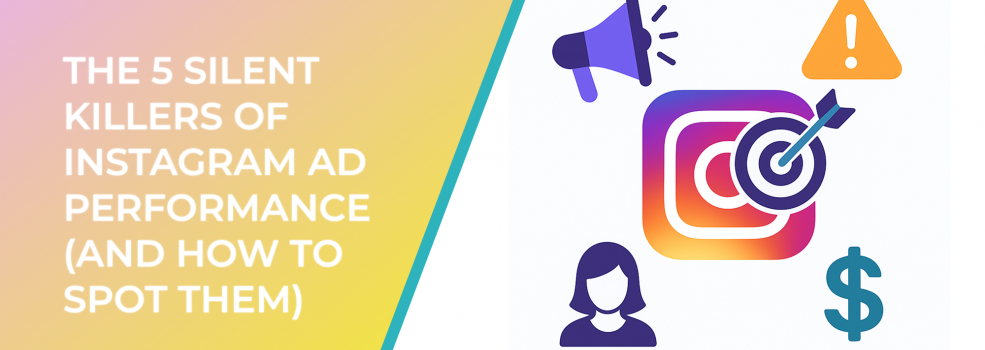The 5 Silent Killers of Instagram Ad Performance (and How to Spot Them)
Announcement:
If you're investing time and budget into Instagram ads but not seeing the ROI you expect, this article will help you uncover the hidden issues that sabotage performance. Learn how to spot the five most common silent killers and fix them before they drain your ad budget. Make sure to also check out our related post, "The Role of Audience Overlap in Facebook Ads Performance", to better understand how targeting inefficiencies impact performance.
Instagram remains one of the most powerful platforms for paid social campaigns, especially for e-commerce and B2C brands. However, even seasoned marketers often overlook the hidden pitfalls that quietly drain ad budgets and cripple ROI. These are the silent killers of Instagram ad performance.
Instagram ads now reach over 1.74 billion users globally and grew by 23.5% in the past year.
Below, we break down the five most common culprits—and how to identify and address them using data-driven strategies.
1. Poor Audience Targeting
Precision targeting is essential, yet many campaigns suffer from either overly broad or overly narrow audience definitions. According to Meta, 36% of advertisers experience below-average performance due to poor audience segmentation.
How to Spot It:
-
High reach with low engagement.
-
High CPM (cost per thousand impressions) but low CTR (click-through rate).
-
Little variation in audience personas.
Solution: Use custom audiences, lookalike audiences, and run audience overlap analysis to avoid cannibalizing your own reach. Check out our article on "How to Combine Dynamic Ads with Retargeting for E-Commerce Success" to dive deeper.
2. Low-Quality Creative Assets
Instagram is a visual-first platform. Poor creative—be it blurry images, inconsistent branding, or unappealing design—can stop your campaign dead in its tracks.
How to Spot It:
-
Low engagement metrics: saves, shares, likes.
-
Ad fatigue symptoms (decreasing performance over time).
-
Comments indicating confusion or disinterest.
Solution: Implement A/B testing for creatives. Focus on mobile-first design. Incorporate user-generated content where appropriate. And ensure alignment between your visuals and messaging.
3. Ignoring Ad Frequency
Frequency fatigue is real. Seeing the same ad repeatedly can frustrate users and lead to negative sentiment.
June 2025 Instagram average ad costs
How to Spot It:
-
Frequency scores above 3 for static campaigns.
-
Rising CPC (cost per click) and decreasing conversions.
-
Comments such as "I keep seeing this ad."
Solution: Set frequency caps, rotate creatives often, and use sequential retargeting. Our article, "How Frequency Capping Helps Beat Facebook Ad Fatigue", provides a detailed strategy.
4. Neglecting Performance Data Segmentation
Looking only at aggregate metrics masks deeper insights. Without segmentation by age, gender, location, device, or placement, it's nearly impossible to optimize effectively.
How to Spot It:
-
Consistent but mediocre campaign performance.
-
No clear winners in A/B testing.
-
Lack of improvement over time despite tweaking ad copy or visuals.
Solution: Break down performance data by each dimension and identify top-performing segments. You may find that a specific age group or device type is outperforming others.
5. Weak Call-to-Action (CTA)
A compelling CTA is your final nudge to drive conversions. Generic or unclear CTAs reduce the likelihood of action.
How to Spot It:
-
High engagement but low conversion rate.
-
Users clicking through but not taking further action.
-
Exit rates on landing pages remain high.
Solution: Test different CTAs that are action-oriented, time-sensitive, and aligned with your ad's promise. "Shop Now" may work for one product, but "Learn More" or "Claim Your Offer" may convert better depending on context.
Final Thoughts
Instagram ads are not a set-it-and-forget-it system. You need constant optimization to avoid these silent killers. Use tools and strategies that offer granular data, conduct frequent audits, and ensure your audience targeting, creative, and analytics are aligned.

